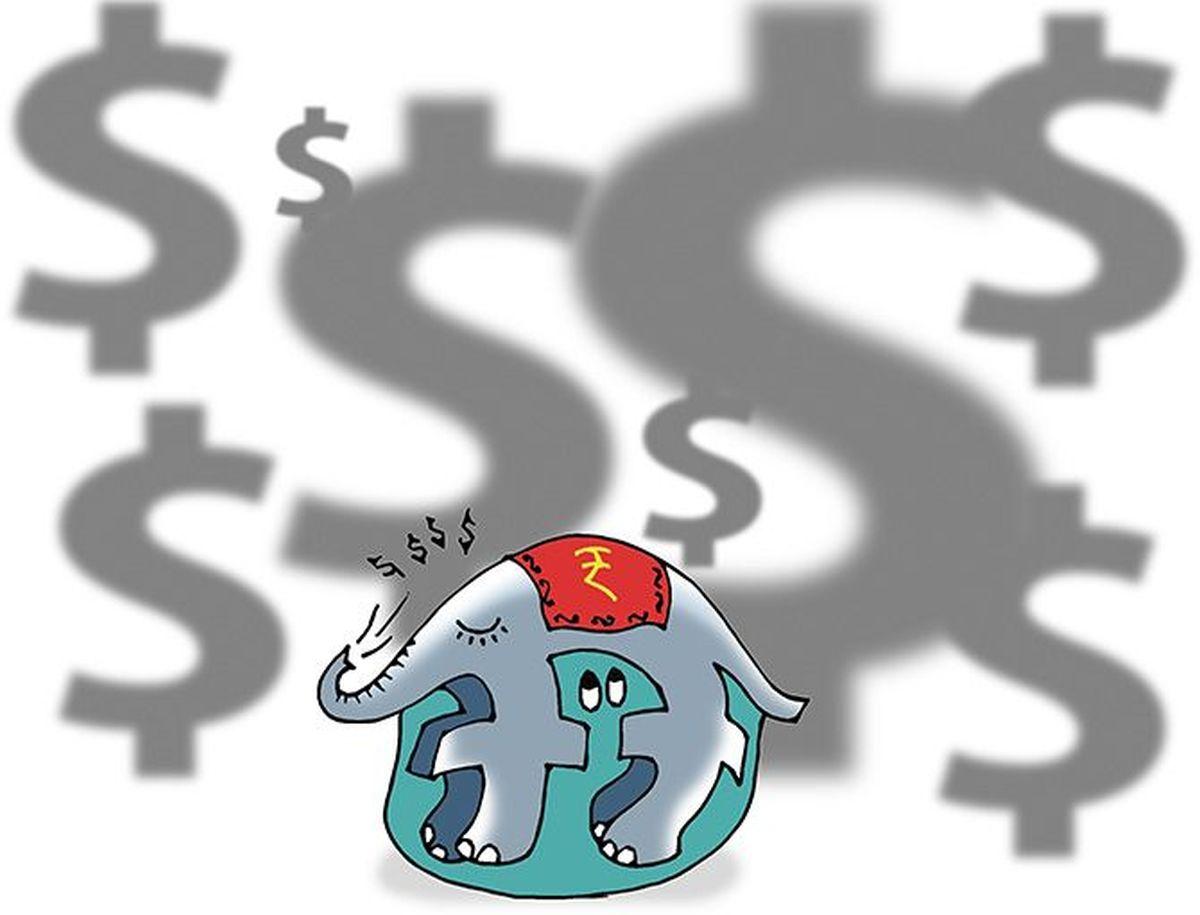Foreign investment in bonds issued by Indian corporates touched a 10-year high in May at Rs 20,996 crore, driven by $3.35 billion fundraise by the Shapoorji Pallonji (SP) group, which saw infusion from Deutsche Bank, BlackRock, Morgan Stanley, Davidson Kempner, and Cerberus Capital, among others.

Illustration: Dominic Xavier/Rediff
The SP group sold three-year bonds, offering 19.75 per cent yield compounded annually and payable at maturity.
According to data from National Securities Depository Ltd (NSDL), in May, net foreign investment in bonds of Indian corporate stood at Rs 20,966 crore, compared to an outflow of Rs 8,879 crore in April.
Back in January 2015, foreign investment in corporate bonds had touched Rs 21,660 crore.
In 2024-25 (FY25), foreign investment in bonds issued by Indian corporates stood at Rs 12,382 crore while in FY24, it was just Rs 4,511 crore.
As of June 4, total foreign investment in corporate bonds stood at Rs 1.28 trillion, which is just 16.74 per cent of the utilised limit. The available limit stands at Rs 6.35 trillion, NSDL data shows.
This comes amid the Reserve Bank of India’s (RBI’s) decision to scrap “short-term investment limit” and “concentration limit” for foreign portfolio investors (FPIs) in corporate debt securities, aimed at providing greater investment flexibility.
Previously, foreign investors were permitted to allocate no more than 30 per cent of their total corporate debt investments to instruments with maturities of up to one year.
In addition, concentration limit restricted their exposure to 15 per cent of the prevailing investment cap for long-term investments, and 10 per cent for other categories.
Industry insiders suggest that this move will encourage increased FPI participation in India’s high-yield debt segment.
With the yield spread between high-rated Indian corporate bonds and US bonds narrowing, lower-rated bonds offering higher returns are expected to draw greater interest from foreign investors.
“Corporate bonds have been giving higher returns, and the recent change in norms for FPIs also boosted the demand. In government securities (G-Secs), the yield did inch up because of the (India-Pakistan) conflict in the initial days, but later, we almost touched 6.20 per cent, when the US yield was on the rise.
“We expect more influx in the corporate bond segment,” said a market participant.
“The tightening of spreads between US Treasury and Indian sovereign and AAA-rated corporate bonds has made them relatively less attractive to global investors, leading to a noticeable decline in foreign inflows into these categories and even resulting in FPI outflows.
“A notable turning point came with the recent high-yield, unrated, and unlisted bond issuance.
“Its successful closure at the end of May is widely regarded as a trigger for renewed FPI inflows, particularly into the high-yields segment,” said Venkatakrishnan Srinivasan, founder and managing partner of Rockfort Fincap LLP.
He added that FPIs are now selectively seeking yield pick-up opportunities in AA- and below-rated bonds, focusing on risk-adjusted returns rather than just chasing high yields.
The emphasis is on relative spread advantage, rather than purely on absolute coupon levels.
“Meanwhile, regulators have also stepped in by relaxing certain FPI investment norms, aiming to enhance participation and deepen the corporate bond market.
“Looking ahead, while inflows into G-Secs and AAA bonds may remain muted until yield spreads normalise or trading opportunities emerge, FPIs are likely to stay engaged in India’s bond market, especially where credit spreads offer compelling value amid global volatility,” Srinivasan said.
“Yields on corporate bonds are higher than G-Secs.
“Corporate bonds have a mix of everything, not just AAA-rated bonds.
“Investors can get double-digit returns by investing in lower-rated bonds.
“Yields on Indian government securities have been moderating, with inflation trending downwards, and fiscal consolidation efforts by the government.
“We have seen outflows by foreign investors from G-Secs recently,” said Ajay Manglunia, executive director, Capri Global Capital.
According to data from the Clearing Corporation of India (CCIL), foreign investors withdrew Rs 25,543.68 crore from Indian bonds under the Fully Accessible Route (FAR) during the current quarter.
They did so due to narrow interest rate differential between India and US 10-year bonds.




